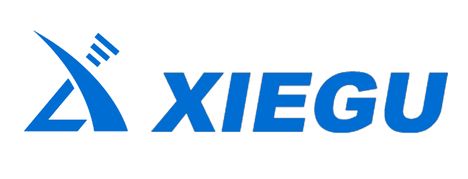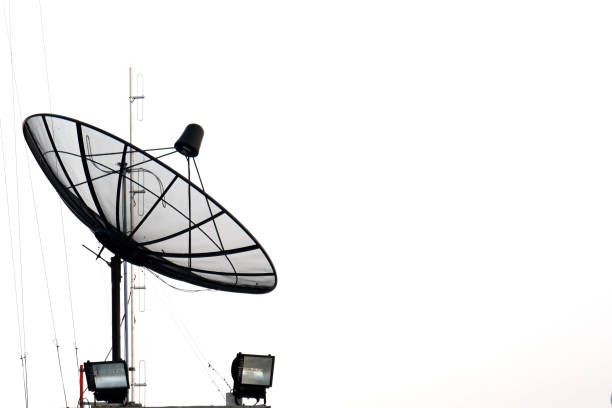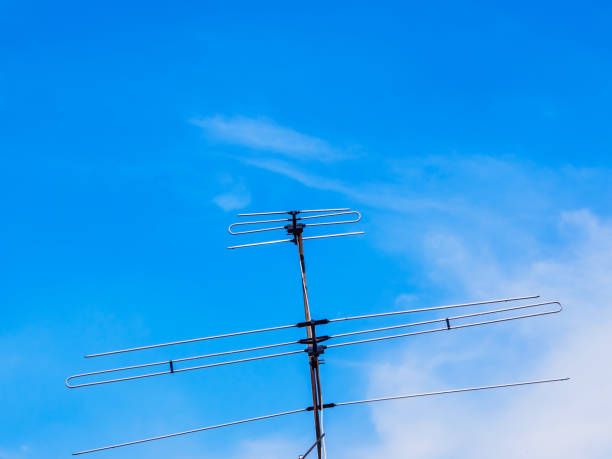
Send Inquiry
What Distinguishes Various Types of Amateur Radio Antennas?
Understanding the different types of amateur radio antennas is crucial for achieving optimal performance in communication. Each antenna type has its strengths and weaknesses, and choosing the right one can significantly impact signal quality, range, and reliability. By delving into the characteristics of various antennas, operators can make informed decisions tailored to their specific needs and operating conditions.
Types of Antennas
Dipole Antenna
The dipole antenna is one of the most common and straightforward designs for amateur radio. Consisting of two metal rods or wires, it is easy to construct and provides reliable performance for local and medium-range communication.
Vertical Antenna
Vertical antennas radiate in all horizontal directions and are suitable for general communication. They are space-efficient and easy to install, making them popular choices for many ham radio operators.
End Fed Wire Antenna
End fed wire antennas, also known as long wire antennas, offer versatility and ease of installation. While they may be prone to interference, they are lightweight and portable, making them ideal for portable operations.
Yagi-Uda Antenna
Yagi-Uda antennas, often referred to as Yagis, are directional antennas with high gain and directivity. They are popular for long-range communication and are commonly used in terrestrial communication and satellite tracking.
Loop Antenna
Loop antennas come in various sizes and configurations, offering compact designs suitable for indoor or discreet mounting. While they may require precise tuning, they provide low-noise reception and can be effective over a wide frequency range.
Log-Periodic Antenna
Log-periodic antennas offer a wide frequency range and good gain, making them suitable for multiple bands and applications. However, they are larger and more complex to install compared to other antenna types.
Quad Antenna
Quad antennas consist of square or rectangular loops and offer high gain and directivity. While they require precise aiming and positioning, they provide excellent performance, especially compared to simpler dipole antennas.
Handheld Antennas
Handheld antennas, such as whip antennas, are simple and portable options commonly used with handheld ham radios. While they offer flexibility and convenience, their range and performance may be limited compared to larger antennas.
CB Antenna
CB antennas, although not specifically designed for amateur radio, can be compatible with certain ham radio bands with modifications. They offer decent communication range and are popular among truckers and CB radio enthusiasts.
Key Factors Differentiating Antennas
Directionality
The directionality of an antenna determines the pattern of radiation and reception. Directional antennas, such as Yagi-Uda and quad antennas, offer high gain and directivity, ideal for long-range communication. In contrast, omnidirectional antennas, like vertical antennas, radiate in all horizontal directions, suitable for general communication.
Frequency Range
Antennas are designed to operate within specific frequency ranges. Some antennas, like dipole and vertical antennas, are optimized for certain bands, while others, like log-periodic antennas, offer wide frequency coverage.
Gain
Gain refers to the ability of an antenna to focus radiation in a particular direction. Antennas with higher gain can transmit and receive signals over longer distances, making them suitable for DX communication and weak signal reception.
Size and Portability
The size and portability of an antenna are essential considerations, especially for portable and mobile operations. Compact antennas, such as end fed wire antennas and handheld antennas, offer convenience for operators on the go.
Installation and Setup
Ease of installation and setup can vary significantly between antenna types. While some antennas, like dipole antennas, are simple to assemble and install, others, like log-periodic antennas, may require more complex mounting and tuning procedures.
Cost and Affordability
The cost of an antenna can vary depending on factors such as size, construction materials, and brand. While simpler antennas like dipole and vertical antennas are relatively affordable, more complex antennas like Yagi-Uda and log-periodic antennas may require a larger investment. Consideration of budget constraints is essential when selecting an antenna for amateur radio operations.
Pros and Cons of Each Antenna Type
Dipole Antenna
Pros:
- Simple construction and easy to assemble.
- Effective for both transmitting and receiving signals.
- Suitable for local and medium-range communication.
Cons:
- Limited bandwidth compared to other antenna types.
- Requires proper height and orientation for optimal performance.
- Susceptible to interference from nearby objects.
Vertical Antenna
Pros:
- Omnidirectional radiation pattern for general communication.
- Space-efficient and easy to install.
- Low radiation angle for long-distance communication.
Cons:
- Lower gain compared to directional antennas.
- Vulnerable to man-made noise interference.
- May experience performance issues on lower frequency bands.
End Fed Wire Antenna
Pros:
- Low cost and lightweight design.
- Portable and easy to install.
- Can be used for multi-band operation.
Cons:
- Prone to interference from power lines and electrical equipment.
- May cause interference with TVs, radios, and internet signals.
- Requires proper grounding and tuning for optimal performance.
Yagi-Uda Antenna
Pros:
- High gain and directivity for long-range communication.
- Suitable for both transmitting and receiving signals.
- Effective for terrestrial communication and satellite tracking.
Cons:
- Large and heavy, requiring sturdy support structures.
- Requires precise aiming and positioning for optimal performance.
- Limited bandwidth compared to other antenna types.
Loop Antenna
Pros:
- Compact size and discreet mounting options.
- Low-noise reception over a wide frequency range.
- Suitable for indoor and portable operations.
Cons:
- Limited bandwidth and radiation efficiency for magnetic loops.
- Requires precise tuning, which may be challenging for beginners.
- Performance may vary depending on installation location.
Log-Periodic Antenna
Pros:
- Wide frequency range and good gain.
- Suitable for multiple bands and applications.
- Effective for sideband, FM, repeaters, and moonbounce communication.
Cons:
- Large and complex design, requiring proper support structures.
- Possible reduced performance at the lower end of the frequency range.
- More expensive compared to simpler antenna types.
Quad Antenna
Pros:
- High gain and directivity for long-range communication.
- Good performance for both transmitting and receiving signals.
- Less affected by nearby objects compared to other antennas.
Cons:
- Bulky and requires proper support structures for mounting.
- Requires precise aiming and positioning for optimal performance.
- More complex to build and adjust compared to other antenna types.
Handheld Antennas
Pros:
- Simple to use and usually included with handheld ham radios.
- Flexible and can be used in various situations.
- Affordable and readily available.
Cons:
- Limited range due to shorter length.
- Cheaply made and may require replacement over time.
- Performance may not match larger and more sophisticated antennas.
CB Antenna
Pros:
- Easy to install and offers decent communication range.
- Compatible with certain ham radio bands with modifications.
- Popular among truckers and CB radio enthusiasts.
Cons:
- Requires tuning using an SWR meter for optimal performance.
- May need modifications to adjust antenna length for specific bands.
- Performance may vary depending on installation and environmental factors.
Comparison of Performance Metrics
- Range and Coverage: Different antenna types offer varying ranges and coverage areas, influenced by factors such as gain and radiation pattern.
- Signal Strength and Clarity: Antenna design affects signal strength and clarity, impacting communication quality over short and long distances.
- Noise Reduction: Some antennas provide better noise reduction capabilities, resulting in clearer reception and improved signal-to-noise ratio.
- Interference Resistance: Antennas differ in their susceptibility to interference from external sources, affecting communication reliability in noisy environments.
- Versatility and Adaptability: Each antenna type has unique characteristics that make it suitable for specific applications and operating conditions, requiring consideration of versatility and adaptability when selecting an antenna for amateur radio operations.
Choosing the Right Antenna
Factors to Consider
When selecting the right antenna for your amateur radio setup, several crucial factors should guide your decision-making process.
- Operating Frequency: Begin by determining the frequency range you plan to operate on. Different antennas are optimized for specific frequency bands, so selecting one that aligns with your preferred frequencies is essential for optimal performance.
- Communication Needs: Consider your communication requirements. Are you primarily engaging in local, regional, or long-distance communication? Your antenna choice should match your intended communication range and target audience.
- Available Space: Assess the available space for antenna installation. Larger antennas like Yagi-Uda or log-periodic antennas require more significant mounting space and sturdy support structures. If space is limited, compact options like dipole or loop antennas may be more suitable.
- Budget Constraints: Establish a budget for your antenna setup. While some antennas may require a larger initial investment, there are also affordable options available that offer reliable performance. Balance your budget with your desired features and performance expectations.
Practical Recommendations
Once you've considered the relevant factors, follow these practical recommendations to ensure you choose the right antenna for your amateur radio station.
- Matching Antenna to Ham Radio Equipment: Ensure compatibility between your chosen antenna and your ham radio equipment. Verify that the antenna's frequency range and connector type align with your transceiver specifications to avoid compatibility issues.
- Assessing Installation Requirements: Evaluate the installation requirements for your selected antenna. Consider factors such as mounting location, height, and grounding to optimize performance. Some antennas may require additional accessories or modifications for proper installation.
- Exploring Compatibility with Accessories: Explore compatibility with accessories such as antenna tuners or mast rotators. Depending on your setup and operating preferences, these accessories can enhance antenna performance and versatility. Ensure that your chosen antenna is compatible with any accessories you plan to incorporate into your amateur radio station setup.
By carefully considering these factors and following practical recommendations, you can confidently select the right antenna to meet your amateur radio communication needs.
Conclusion
In summary, choosing the right antenna is crucial for maximizing the effectiveness of your amateur radio setup. By understanding the various types of antennas available and considering factors such as frequency range, communication needs, space limitations, and budget, you can make an informed decision that suits your specific requirements.
For those looking to upgrade their amateur radio setup with high-quality antennas, we encourage you to consider Ruixue antennas. With a reputation for reliability, performance, and durability, Ruixue antennas are trusted by amateur radio operators worldwide. Visit our website today to explore our range of antennas and take your radio experience to the next level.


